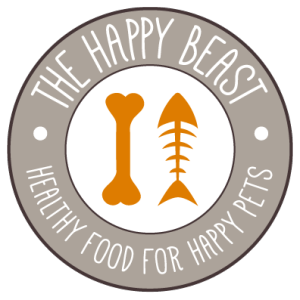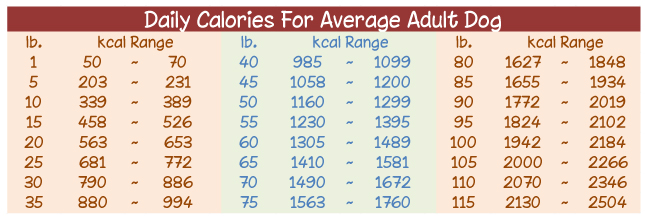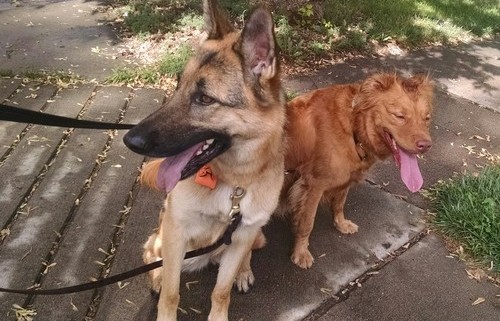Losing weight can be challenging for overweight dogs, but the health benefits are well worth it. At a healthy weight, your dog will be more resistant to disease, feel better, and live longer. No one get’s excited about cutting calories, (especially when you’re a hungry dog) but we have a few tricks to make dieting simple, effective and a little fun.
Set a Goal and Start Counting Calories
Determine both your dog’s current weight and his ideal weight. Talk to your vet about what your dog’s weight should be or bring your dog into The Happy Beast and we can make a suggestion. The easiest way to determine the calories in your animal’s current and ideal diet is…. to let us do it for you! Once you have a target weight, we can factor in age, breed, and activity level to help determine how many calories your dog needs. As a general guideline, look at the feeding suggestion on your dog’s food to find your dog’s IDEAL weight and feed 75% of that amount. For example. If your dog’s goal weight is 30 lbs and the label of his dog food recommends 1 cup of food, feed him only ¾ cup.
Treats are OK!
Cutting out treats is a foolproof way to reduce calories, but it’s definitely not necessary for success. In fact, a couple of treats during the day may help your dog feel more satisfied. Just make sure to factor treats into your dog’s daily calorie “budget.” Look for treats with the calories printed on the label. Fruitables’ Crunchy Treats and Boulder Dog Food Co.’s Bison Cubes have just 8 calories per treat. Decide how many treats you want to give your dog each day, and subtract the calorie-equivalent from his normal meals.
Chewing on bones and tendons also provides important dental care. If chewing is part of your dog’s routine, choose lower-calorie options and feed your dog less on days he gets a treat. Marrow bones and bully sticks have enough calories to replace a whole meal for a medium size dog. A tendon or cow cheek would replace fewer calories.
When I’m Bored… I Eat
Make dinnertime a game! Dogs have a natural instinct to forage for their food. Instead of feeding your dog out of a bowl, make him work for it! Fill a puzzle toy like the PetSafe’s Magic Mushroom with a serving of kibble and let him knock it around until the food falls out. If you’re feeding canned or raw food, stuff it into a Kong or spread it out on a large, flat plate. All of these will force your dog to slow down meal time and enjoy smaller bites (instead of gulping down everything at once) leaving him more satisfied. Feeding this way also provides mental stimulation and reduces boredom.
Add Fresher Foods
Besides their basic nutritional benefits, fresher foods help your dog feel more satiated. Kibble is typically very calorie-dense so it doesn’t take up much space in the stomach and can leave your dog feeling hungry. Because of their high moisture content, dehydrated, canned, and raw foods can help your dog feel full. Replace some or all of your dog’s kibble with a fresher food. Try Steve’s, Primal and SmallBatch frozen raw, Grandma Lucy’s, Sojo’s or The Honest Kitchen dehydrated.
Get moving!
Exercise doesn’t need to be a lofty goal. Thirty minutes a day is a good starting point, especially if your dog isn’t very active. Divide that time up into a few ten-minute walks or five-minute games of fetch.
Ready to start your dog on a healthy weight program? Stop by The Happy Beast and we’ll lay out an easy-to-follow plan for you and your dog!


